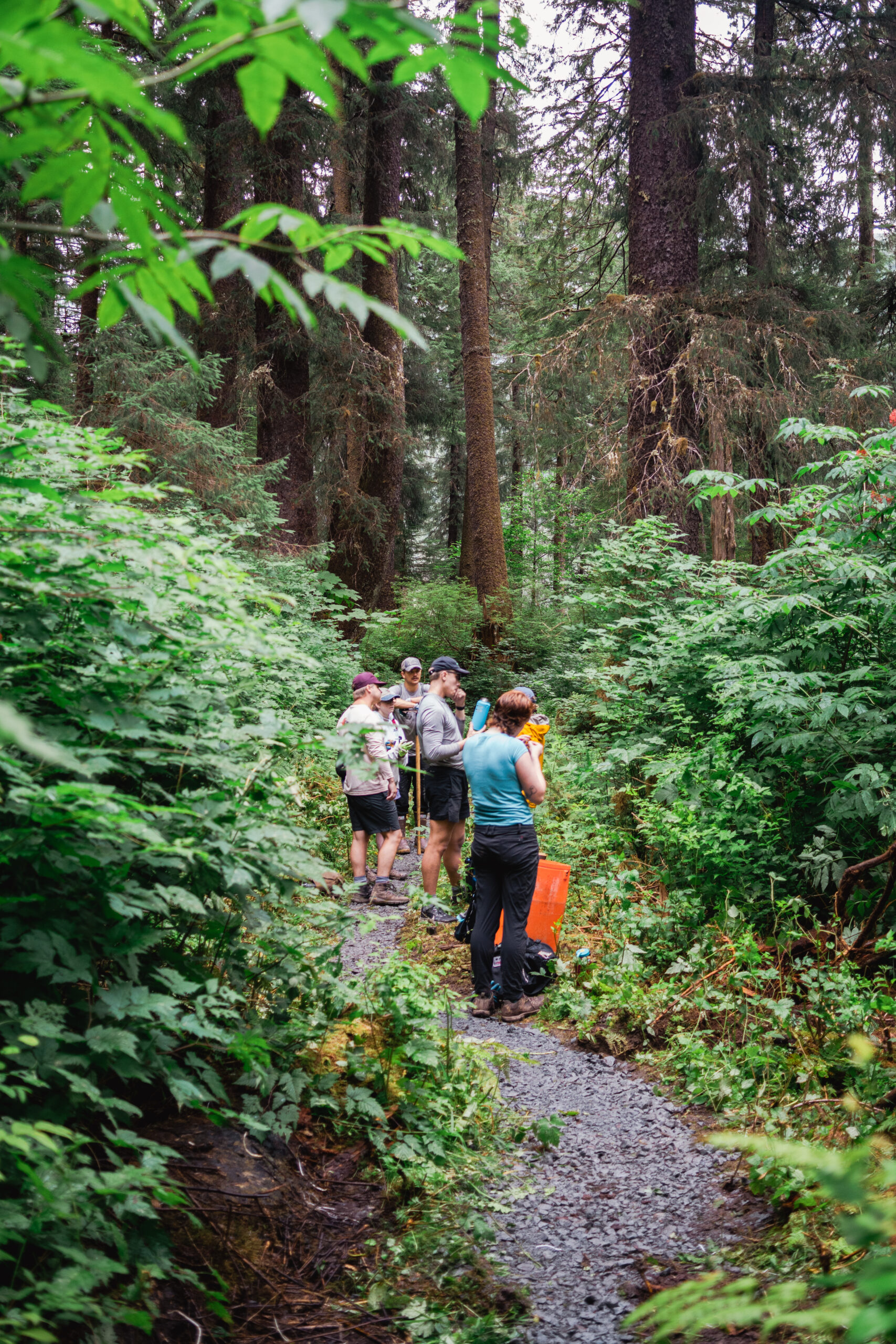- USE : Hike
- DESCRIPTION : The Causeway connects Japonski, Sasedni, Kirushkin, and Makhnati Islands. There are underground bunkers that remain from WWII and they can be explored but use caution because they are very old. If you do plan on exploring these bunkers, use a good flashlight because within them, there are some sudden drop-offs.
- DISTANCE : 1.5 miles one way
- TIME : 2 – 3 hours to walk length of trail and explore historic structures and relics. Be sure to be there long enough for the tide to fall enough to access Makhnati Island.
- TRAILHEAD : Options to access by kayak or boat at any of the “bights” along the length of the Causeway. Kayaks can be rented or local sea taxis will drop you off and pick you up. Whiting Harbor has an invasive sea organism, the tunicate D.vex (Didemnum Tunicate – Didemnum vexillum), so arriving by boat at high tide is recommended. The organism is found below the low tide line.
- ELEVATION GAIN : The trail is level.
- RECOMMENDED SEASON : Year-round, depending on sea conditions. The trip to the Causeway is difficult when it is windy.
- LEVEL OF DIFFICULTY : Easy.
- TRAIL MANAGEMENT AGENCY : Alaska State Parks ceased maintenance of the trail when Ranger position defunded due to budget cuts in 2015.

Features
Located west of the Sitka airport runway, Fort Rousseau Causeway State Historical Park provides a unique opportunity for visitors to discover Sitka’s WWII history. Although there is no land access to the park, a short boat ride or kayak is worth the effort. Visitors to the park can explore numerous WWII features including ammunition magazines, lookouts, gun emplacements, and the headquarters command center. The park also offers great opportunities for picnicking and wildlife viewing. Fort Rousseau Causeway SHP is undeveloped.
Fort Rousseau is part of the Sitka Naval Operating Base and U.S. Army Coastal Defenses National Historic Landmark. In addition to National Historic Landmark status, the fort’s significance as the headquarters for the harbor defenses of Sitka during World War II also earned it designation as a State Historical Park in April 2008.
The developed gravel trail ends before the causeway to Makhnati Island. It is recommended to cross this causeway on a falling or low tide. It is impassible at medium to high tide so planning the timing for a crossing is important. The rocks are slippery and extreme care should be taken when crossing the causeway. The best WWII era features are found on Makhnati Island. See link to Matt Hunter’s Sitka WW2 website below for the best description.
Other Sources
http://dnr.alaska.gov/parks/aspunits/southeast/ftrousseau.htm

